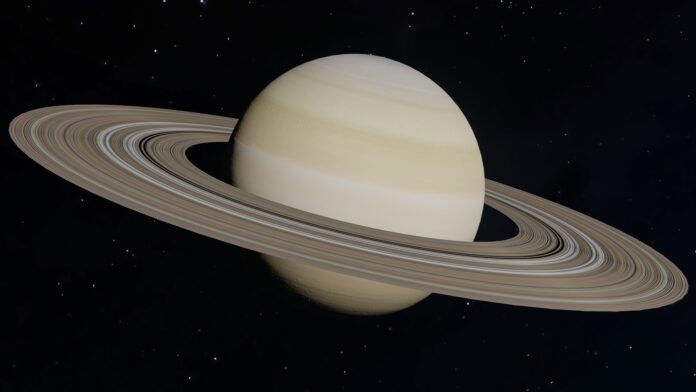The Earth’s Moon may appear to be unique in the night sky, but it turns out that there are hundreds of different moons throughout our Solar System. The majority of these objects, also known as “natural satellites”, are hosted by the gas giant planets — including a whopping 62 new moons recently found to be orbiting the planet Saturn.
This new discovery, which brought Saturn’s total number of moons to more than 100, included contributions from the University of British Columbia and was announced in the International Astronomical Union‘s Minor Planet Center.
Moons are objects that orbit planets or asteroids, and while all of us are familiar with the Earth’s Moon, the moons throughout our Solar System come in many sizes, shapes, types, and colours. The largest moons in our Solar System can be seen with a simple pair of binoculars, but many others are much smaller and fainter. This makes them difficult to detect and classify.
The first moon to be detected around Saturn — an object known as Titan — has a thick atmosphere made of nitrogen and a surface covered by ice and oceans. Yet since this first discovery in the year 1655, dozens of smaller, irregularly shaped moons have also been discovered. The team behind the present study observed Saturn and its moons over the course of many years with the hopes of detecting even more of them.
To search for these faint moons, the researchers gathered observations from the Canada-France-Hawaii Telescope. They used a technique known as “shift and stack”, which involves shifting images at the same rate of a moon’s movement and combining them together in order to increase the signal from the moon. This allowed them to detect moons which weren’t visible in individual images, yet which could be resolved when many such images were stacked.
Crucially, these observations needed to take place over the course of many years in order to distinguish potential moons from comets or asteroids which may have just been passing by. Using all these observations, the team was able to identify a total of 62 new moons — bringing the total number of moons discovered around Saturn to 145.
These results make Saturn the first planet to surpass 100 discovered moons, and brings it to first place ahead of Jupiter, for which we’ve currently discovered 95. Many of these newly discovered moons are what astronomers refer to as irregular moons, meaning that their orbits are larger or more elliptical than their “regular” counterparts.
The scientists behind the study believe that many of these moons may have formed as the result of a collision — similar to how some scientists believe Mars’ moons Phobos and Deimos first formed. This could help explain why these moons have large, elliptical orbits, and why many of them are small or irregularly shaped.
Brett Gladman, a professor in UBC’s Department of Physics and Astronomy and collaborator on the discovery, explained in a press release that “[a]s one pushes to the limit of modern telescopes, we are finding increasing evidence that a moderate-sized moon orbiting backwards around Saturn was blown apart something like 100 million years ago.”








































